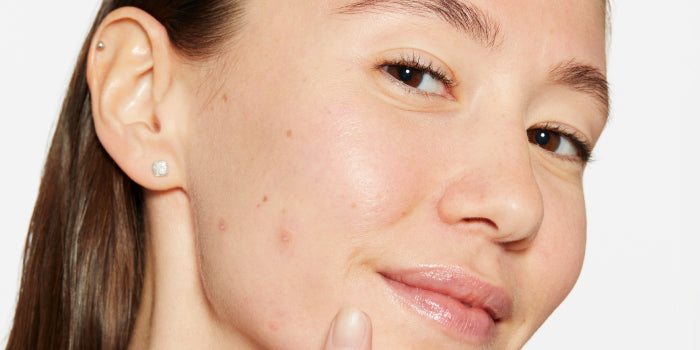2 mins read
Here’s the difference between adult and teen breakouts


As we age, our skin changes–and so do our breakouts. Learn how breakouts evolve as you get older and how to treat them.
Breakouts aren’t just for teenagers. Many adults deal with it, too; in the US, over one third of office visits for breakouts are made by women over 25 years old. While the symptoms might look similar, adult and teen breakouts differ significantly in causes, treatment approaches, and triggers. Understanding these differences is key to managing breakouts effectively.
Adult breakouts
Thought you could leave breakouts behind in your teens? Think again. Chronic stress, hormonal fluctuations, busy lifestyles, and pollution are key drivers of adult breakouts, congestion, and uneven skin tone. Slower skin cell turnover with age means breakouts take longer to heal, leaving post-breakout marks that linger.
Adult breakouts often present as red, sensitive, and inflammatory breakouts around the mouth, chin, and jawline. Hormonal changes and chronic stress are frequent culprits, especially for women. Adult breakouts are also more challenging to treat because the skin’s microbiome changes with age, and harsh treatments can disrupt its balance – exacerbating breakouts and accelerating signs of skin aging.
how to clear adult breakouts:
- Focus on balancing the skin with prebiotics like those found in Breakout Biotic Moisturizer, and making sure your other skin care needs are met.
- Avoid picking or squeezing breakouts at home; it can result in more breakouts, scarring or redness. Instead, see a professional skin therapist for an extraction.
- Adult skin can lose its ability to retain moisture with age. Avoid over-drying skin by choosing products that contain less drying ingredients such as Salicylic Acid or Glycolic Acid to help remove dead skin cells, excess oil and dirt, as well as Thymol and Terpineol to target breakout-causing bacteria.
- If you’re combatting signs of skin aging, look for ingredients such as Niacinamide and Hexylresorcinol to help balance uneven skin tone. Retinol – a wrinkle-smoothing ingredient – can also help reduce the appearance of premature aging.
- Try Active Clearing formulas; they’re specially designed to target adult breakouts.
Teen breakouts
- Focus on learning and maintaining good skin care habits to help prevent future breakouts.
- Avoid products that contain pore-clogging ingredients like Lanolin and Mineral Oil. Stripping ingredients such as Alcohol – commonly found in astringent toners – can cause skin to produce more oil, fueling even more breakouts. Artificial fragrances and colors can also further irritate breakout-prone skin.
- Look for ingredients like Salicylic Acid to keep dead skin cells and bacteria from accumulating.
- Moisturize and wear SPF daily. Dehydration and environmental stress can trigger more sebum production and make existing breakouts look worse. Even if your skin seems oily, use an oil-free SPF moisturizer to help protect and balance your skin.
- Try Clear Start formulas to treat and prevent teen breakouts.
Still not sure which Dermalogica cleanser is best for you? Chat live with our skin therapists, or try our Face Mapping technology for a personalized skin analysis.








